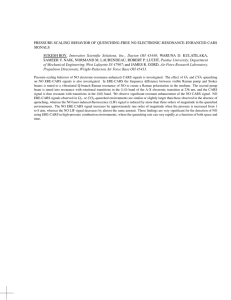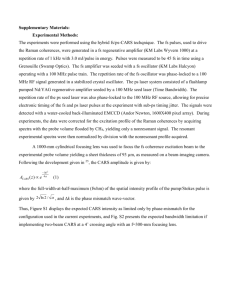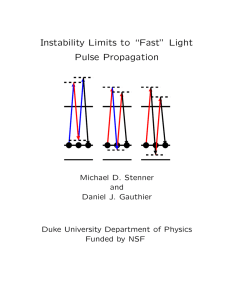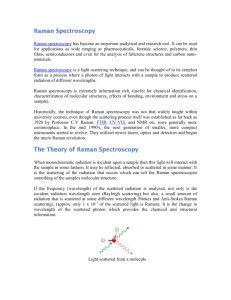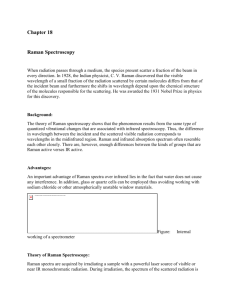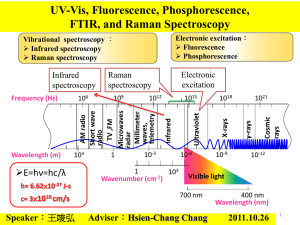ELECTRONIC RAMAN SCATTERING IN HALOGEN ATOMS:
advertisement
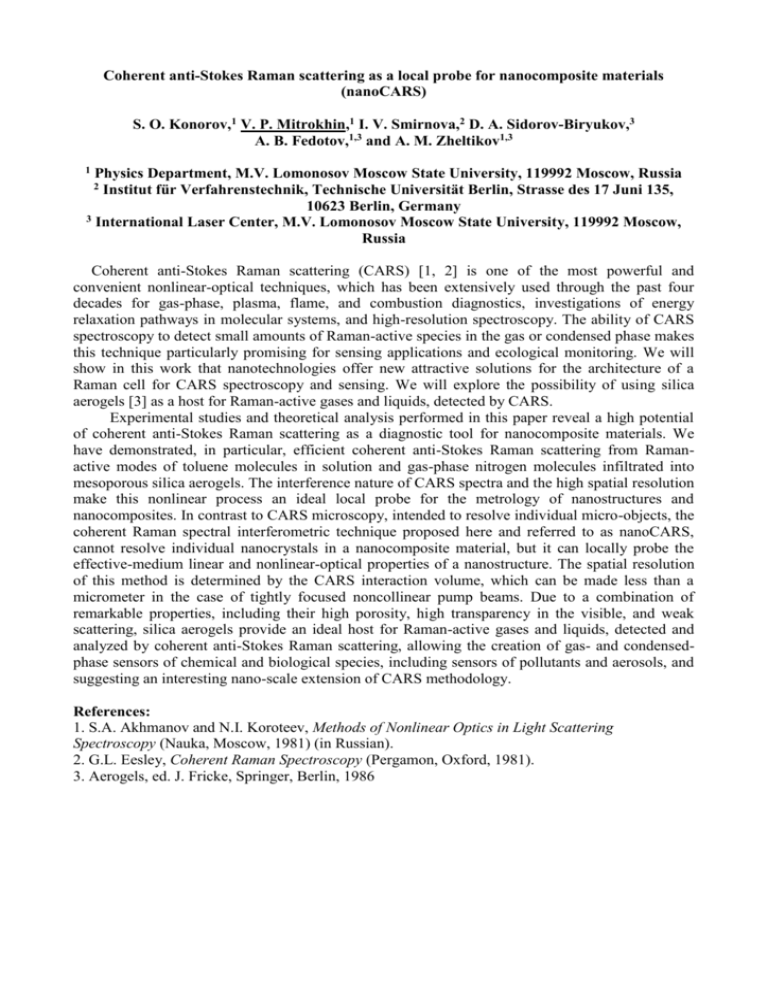
Coherent anti-Stokes Raman scattering as a local probe for nanocomposite materials (nanoCARS) S. O. Konorov,1 V. P. Mitrokhin,1 I. V. Smirnova,2 D. A. Sidorov-Biryukov,3 A. B. Fedotov,1,3 and A. M. Zheltikov1,3 1 Physics Department, M.V. Lomonosov Moscow State University, 119992 Moscow, Russia Institut für Verfahrenstechnik, Technische Universität Berlin, Strasse des 17 Juni 135, 10623 Berlin, Germany 3 International Laser Center, M.V. Lomonosov Moscow State University, 119992 Moscow, Russia 2 Coherent anti-Stokes Raman scattering (CARS) [1, 2] is one of the most powerful and convenient nonlinear-optical techniques, which has been extensively used through the past four decades for gas-phase, plasma, flame, and combustion diagnostics, investigations of energy relaxation pathways in molecular systems, and high-resolution spectroscopy. The ability of CARS spectroscopy to detect small amounts of Raman-active species in the gas or condensed phase makes this technique particularly promising for sensing applications and ecological monitoring. We will show in this work that nanotechnologies offer new attractive solutions for the architecture of a Raman cell for CARS spectroscopy and sensing. We will explore the possibility of using silica aerogels [3] as a host for Raman-active gases and liquids, detected by CARS. Experimental studies and theoretical analysis performed in this paper reveal a high potential of coherent anti-Stokes Raman scattering as a diagnostic tool for nanocomposite materials. We have demonstrated, in particular, efficient coherent anti-Stokes Raman scattering from Ramanactive modes of toluene molecules in solution and gas-phase nitrogen molecules infiltrated into mesoporous silica aerogels. The interference nature of CARS spectra and the high spatial resolution make this nonlinear process an ideal local probe for the metrology of nanostructures and nanocomposites. In contrast to CARS microscopy, intended to resolve individual micro-objects, the coherent Raman spectral interferometric technique proposed here and referred to as nanoCARS, cannot resolve individual nanocrystals in a nanocomposite material, but it can locally probe the effective-medium linear and nonlinear-optical properties of a nanostructure. The spatial resolution of this method is determined by the CARS interaction volume, which can be made less than a micrometer in the case of tightly focused noncollinear pump beams. Due to a combination of remarkable properties, including their high porosity, high transparency in the visible, and weak scattering, silica aerogels provide an ideal host for Raman-active gases and liquids, detected and analyzed by coherent anti-Stokes Raman scattering, allowing the creation of gas- and condensedphase sensors of chemical and biological species, including sensors of pollutants and aerosols, and suggesting an interesting nano-scale extension of CARS methodology. References: 1. S.A. Akhmanov and N.I. Koroteev, Methods of Nonlinear Optics in Light Scattering Spectroscopy (Nauka, Moscow, 1981) (in Russian). 2. G.L. Eesley, Coherent Raman Spectroscopy (Pergamon, Oxford, 1981). 3. Aerogels, ed. J. Fricke, Springer, Berlin, 1986


